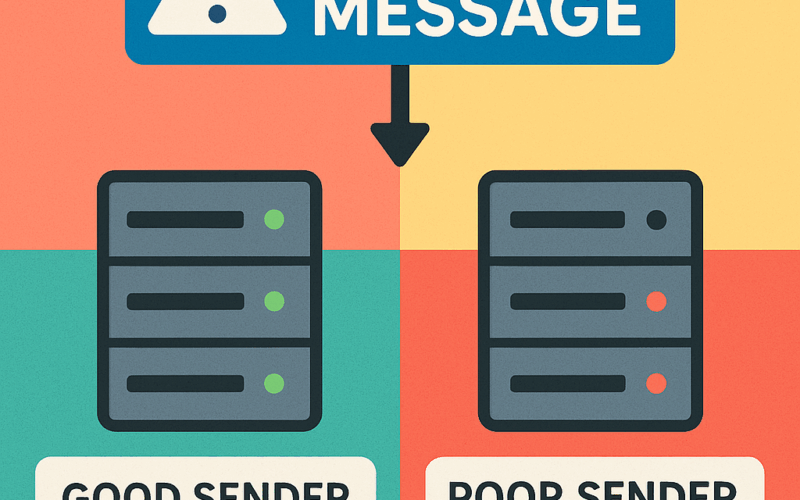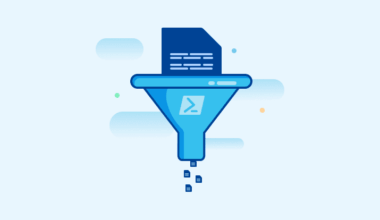Server Reputation and Algorithms: Preventing Spam
Managing the reputation of a server is crucial for ensuring reliable and secure email communication. In this blog post, we take a deep dive into the world of server reputation and the algorithms that help prevent spam. We discuss the key tools and techniques, such as DMARC, DKIM, and SPF, and how they contribute to a positive server reputation.
Table of Contents
- What is Server Reputation?
- The Importance of Server Reputation
- Algorithms and Their Role in Spam Prevention
- DMARC, DKIM, and SPF: The Three Pillars of Email Authentication
- Tools for Managing Server Reputation
- Best Practices to Prevent Spam
- Conclusion
What is Server Reputation?
Server reputation refers to the perception of the reliability and security of an email server by other servers and email providers. A good server reputation ensures that emails are delivered correctly to the recipient’s inbox, while a poor reputation can result in blocks and emails being marked as spam.
The Importance of Server Reputation and Algorithms
A strong server reputation is essential for businesses that rely on email communication. It prevents legitimate emails from ending up in spam folders and protects against phishing and other forms of email fraud. Additionally, a good reputation contributes to the overall credibility and trustworthiness of an organization.
Algorithms and Their Role in Spam Prevention
Algorithms play a crucial role in identifying and preventing spam. They analyze patterns in email traffic and use machine learning to detect suspicious activity. For example, these algorithms can recognize unusual sending behavior from a server and take action to block potential spam. You can assist these algorithms by actively reporting spam messages via your email client’s junk mail filters.
DMARC, DKIM, and SPF: The Three Pillars of Email Authentication
Domain-based Message Authentication, Reporting & Conformance (DMARC)
DMARC is an email authentication protocol that helps prevent email spoofing by combining SPF and DKIM. It allows domain owners to specify how emails that fail authentication should be handled.
DomainKeys Identified Mail (DKIM)
DKIM adds a digital signature to email headers, allowing the recipient to verify that the email truly originates from the specified domain and has not been altered during transit.
Sender Policy Framework (SPF)
SPF checks if the sending server is authorized to send emails on behalf of a specific domain by comparing the sending server’s IP address to a list of authorized servers listed in the domain’s DNS records.
Tools for Managing Server Reputation
Several tools can help manage and improve server reputation. Some of the most commonly used tools include:
- MXToolbox
MXToolbox provides a comprehensive set of tools to check email server configurations, detect blacklisting, and analyze email headers. It helps identify issues that could damage server reputation. - Barracuda
Barracuda offers email security and reputation management solutions. The platform protects against spam, phishing, and malware and provides detailed reports on email server performance. - Spamhaus
Spamhaus is a well-known organization focused on fighting spam and cybercrime. Their services include real-time blacklists (RBLs) that help identify and block spammers.
Best Practices to Prevent Spam
Implementing the right techniques and best practices is essential to prevent spam and maintain a good server reputation. Important steps include:
- Implement DMARC, DKIM, and SPF correctly to ensure your emails’ legitimacy.
- Continuously monitor your server reputation using tools like MXToolbox and Barracuda to quickly address any issues.
- Maintain a clean mailing list by regularly removing inactive or invalid email addresses to reduce bounces and spam complaints.
- Train your employees on email security best practices and phishing recognition.
- Use strong passwords and two-factor authentication to protect email accounts from unauthorized access.
Conclusion server reputation and algorithms
Managing server reputation and preventing spam is an ongoing process that requires attention and care. By using the right tools and techniques, such as DMARC, DKIM, and SPF, and following best practices, you can ensure the reliability of your email server and protect your organization from the harmful effects of spam.
Practical Insights
On the internet, many people express frustration over these issues, and in their view, Microsoft support doesn’t always resolve them satisfactorily. What are some common challenges these people (and myself) have encountered?
More information about sending mail from Exchange Online can be found here. More information about the author of this blog post can be found here.






